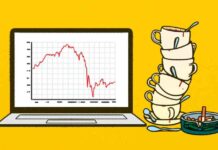Germany’s Economic Stagnation: A Deep Dive into the Multi-Year Trends
Germany’s economic performance has been a topic of concern in recent months, with the country experiencing a 0.1% contraction in the second quarter of this year. This disappointing result has raised questions about the sustainability of Germany’s economic growth and the potential impact on the broader European economy.
Understanding the Numbers: A Closer Look at Germany’s Economic Data
The latest economic data from Germany paints a mixed picture of the country’s economic health. While the economy did manage to eke out a modest growth of 0.3% year-on-year, it is concerning that this growth is only 0.3% above the 2019 peak. In comparison, the United States saw a much more robust growth of 9.3% over the same period, highlighting the stark contrast in economic performance between the two countries.
One of the key factors contributing to Germany’s economic stagnation is the decline in consumer confidence. The GfK’s assessment of the consumer climate in September revealed a marked decline, following six months of steady growth. The deterioration in economic expectations and incomes, as well as a decline in the propensity to buy, have all played a role in dragging down the consumer confidence index. Interestingly, the company attributes the previous six months of enthusiasm to the European Football Championship held in Germany, indicating the impact of major events on consumer sentiment.
Impact on the Eurozone: The Ripple Effect of Germany’s Economic Woes
The implications of Germany’s economic stagnation extend beyond its borders, affecting the broader Eurozone and the Euro currency. Weak macroeconomic data from Germany has put downward pressure on the Euro, not only due to the size of Germany’s economy but also because the Bundesbank is deviating from its traditionally hawkish stance on inflation. This shift in policy could potentially lead to accelerated rate cuts by the European Central Bank (ECB), further complicating the economic outlook for the Eurozone.
The Euro’s performance against other major currencies, such as the US Dollar and the British Pound, reflects the impact of Germany’s economic woes. While the EURUSD pair has been relatively stable due to the weakness of the US Dollar, the EURGBP pair has seen significant volatility. In just three weeks, the EURGBP has lost around 2.2%, quickly returning to two-year lows after a brief period of gains. This sharp decline underscores the vulnerability of the Euro to negative news coming out of Germany and its potential repercussions on the currency markets.
Navigating Uncertain Waters: Challenges and Opportunities for Germany
As Germany grapples with economic stagnation, policymakers and business leaders face a host of challenges in steering the country towards sustainable growth. One of the key issues that needs to be addressed is the structural weaknesses in the German economy, particularly in sectors such as manufacturing and exports. The reliance on traditional industries has left Germany vulnerable to global economic shifts and technological disruptions, necessitating a reevaluation of the country’s economic strategy.
Additionally, the ongoing transition to a more sustainable and digital economy presents both challenges and opportunities for Germany. While the shift towards renewable energy and digital innovation offers new avenues for growth, it also requires significant investments in infrastructure and upskilling of the workforce. Balancing these competing priorities will be crucial in ensuring that Germany remains competitive in the global economy and can weather future economic uncertainties.
Looking Ahead: Strategies for Resilience and Recovery
In the face of economic stagnation, Germany must adopt a multifaceted approach to promote resilience and facilitate recovery. One key strategy is to diversify the economy and reduce reliance on traditional industries, such as automotive and manufacturing. Investing in emerging sectors, such as renewable energy, biotechnology, and digital services, can help stimulate growth and create new opportunities for innovation.
Furthermore, Germany needs to prioritize investments in infrastructure, education, and research to foster long-term economic growth. Improving digital connectivity, enhancing vocational training programs, and supporting research and development initiatives are essential components of a comprehensive economic strategy. By investing in these areas, Germany can build a more resilient and competitive economy that is better equipped to navigate future challenges.
Conclusion: Charting a Path Forward for Germany’s Economy
As Germany grapples with economic stagnation, the road to recovery will undoubtedly be challenging. However, by addressing structural weaknesses, embracing digital innovation, and investing in key sectors, Germany can lay the foundation for a more sustainable and resilient economy. While the current economic outlook may be uncertain, there is still hope that Germany can overcome its challenges and emerge stronger in the years to come.

















